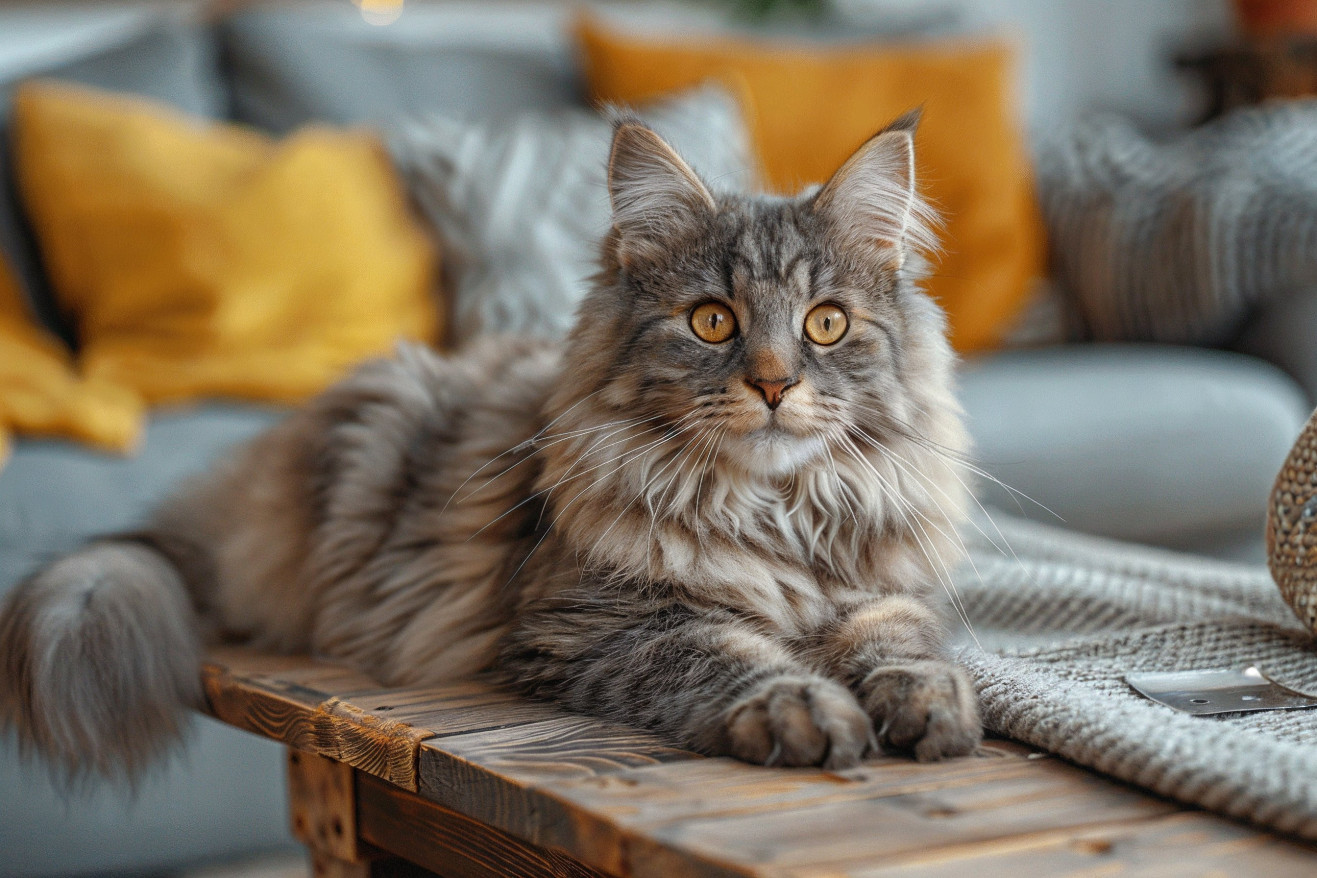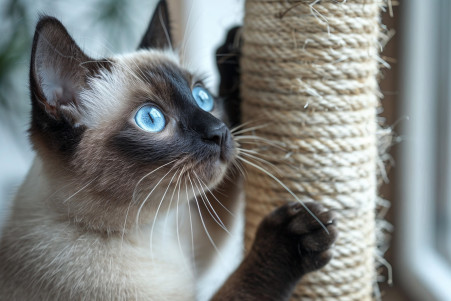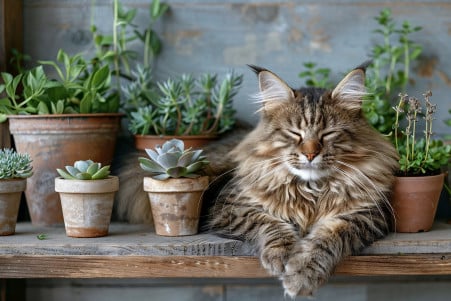How to Keep Cats Off Furniture: Positive Training Techniques
22 March 2024 • Updated 31 March 2024

If your cat has already claimed your sofa or recliner as their own, there are a number of ways to discourage this behavior that don't involve punishing your pet. These include using scent deterrents such as citrus peels, double-sided tape, aluminum foils, or commercial pet repellents on furniture; making sure your cat's needs are met with plenty of scratching posts and cat beds; and using positive reinforcement to reward your cat with treats when they do the right thing.
While it can be a challenge to keep cats off furniture, studies have shown that there are a number of methods that can be effective in different situations and with different cats.
In this article, we'll explore research by animal behaviorists, veterinarians, and other animal professionals into the psychological reasons behind cats' desires to sleep and scratch. We'll also cover positive training techniques that get to the root of the problem, helping you to better understand what you can expect while deepening your relationship with your cat.
How can I keep my cats off furniture?
Offering Appropriate Scratching Surfaces
One of the most important things you can do to prevent cats from scratching furniture is to make sure they have appropriate scratching surfaces available. According to Preventive Vet, this means providing a variety of scratching posts and pads in different materials (e.g., sisal rope, cardboard, wood) and orientations (e.g., vertical, horizontal). It also means placing them in locations that are convenient for your cat, such as near their favorite sleeping spots, in high-traffic areas, and near furniture they've already scratched.
In addition, it's important to make the scratching posts and pads as attractive as possible. According to Wag!, this can be done by using catnip, toys, or treats to reward your cat when they use the posts. It's also important to make sure the posts and pads are the right size and stability. They should be tall and sturdy enough that your cat can fully stretch and lean into them without them wobbling. Finally, you can keep your cat interested in their scratching posts and pads by rotating or replacing them every so often, as recommended by Purrfect Post.
By offering a variety of stimulating, cat-friendly scratching options in locations that are convenient for your cat, you can help ensure that they're able to engage in this natural behavior without destroying your furniture. With a few simple adjustments to your cat's environment, you can help them redirect their scratching behavior in a way that benefits them.
Preventing Furniture Scratching Through Environmental Changes
As noted in Reader's Digest, cats scratch furniture to get rid of the dead layer of their claws and to mark their territory. To prevent this, you can cover furniture with sheets, blankets, or materials like double-sided tape or aluminum foil that are difficult for cats to scratch. BeChewy also suggests using furniture spray repellents that smell bad, such as those that contain citrus or vinegar, to make the surfaces less attractive.
You can also reduce the likelihood of furniture scratching by keeping your cat's nails trimmed or using soft nail caps, as recommended by HedgeApple. Providing interactive toys, puzzle feeders, and other environmental enrichment can also help redirect your cat's natural scratching and play behaviors. It's important to note, however, that you should stick to one method and not punish your cat, as this can cause stress and make the situation worse.
Training Methods to Redirect Scratching Behavior
Positive reinforcement is the most effective way to redirect your cat's scratching behavior. Modkat suggests giving your cat treats or praise when they use the scratching posts you've set up in your home. This will help them learn that this is the behavior you want to see.
It's also important to consistently interrupt your cat and redirect their attention when they start scratching furniture. Bond Vet recommends gently moving your cat to a scratching post when you see them scratching furniture. You can also use clicker training or another positive reinforcement method to help drive this point home, as WikiHow explains.
Remember to stay patient and consistent with your training, as it can take time for your cat to adjust to new behaviors. If you're dealing with particularly stubborn or difficult scratching problems, Modkat suggests reaching out to a professional animal behaviorist or veterinarian for help. With the right methods and a focus on your cat's needs, you can train them to scratch in the right places.
How to Stop Cats From Jumping on Furniture and Countertops
Cats are natural climbers, so it can be difficult to stop them from jumping on furniture and countertops. However, there are ways to keep your cat from jumping on these surfaces while still ensuring that their needs are met. WikiHow suggests using deterrents like double-sided tape, aluminum foil, or citrus scents on the furniture and countertops you want to keep your cat away from. This will make the surfaces less appealing to your cat.
Meanwhile, WebMD recommends providing other elevated surfaces, such as cat trees, shelves, or perches, to satisfy your cat's natural urge to climb. In addition, removing the things that attract your cat to countertops and tables, like food and clutter, can help keep your cat from jumping up on these surfaces. PetCube also suggests using interactive toys, puzzle feeders, and other types of environmental enrichment to distract your cat and keep them from jumping on furniture and countertops.
No matter what methods you use, it's important to stay consistent and avoid punishing your cat, which can cause them stress and make the behavior worse. With time and a focus on your cat's needs, you can find ways to keep your cat from jumping on furniture and countertops that work for both of you.
Conclusion: Building a Stronger Relationship With Your Cat
Dealing with furniture scratching and jumping behaviors will take time, consistency, and a willingness to work with your cat's natural instincts. However, by providing the right scratching posts, using positive reinforcement, and making changes to your cat's environment, you can help your cat while also saving your furniture.
It's important to note that punishing or trying to stop natural behaviors can lead to stress and even make the problems you're trying to solve worse. If you're dealing with behavioral issues that you can't seem to solve, especially if they're causing you stress, don't hesitate to get help from a vet or animal behaviorist.
That said, with some work, you can create a home that works for both you and your cat, allowing you to meet your cat's needs while also protecting your furniture.


